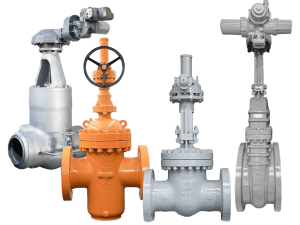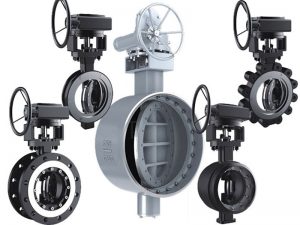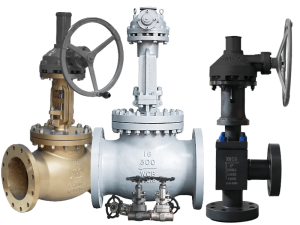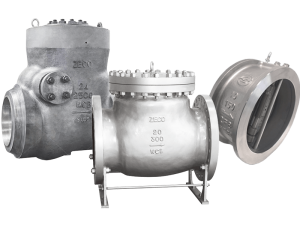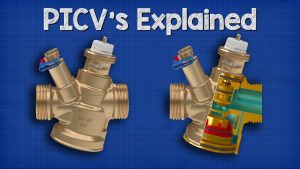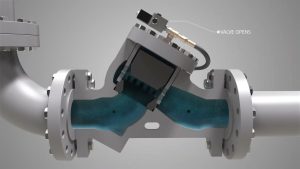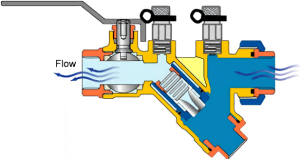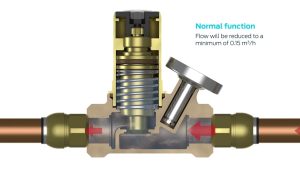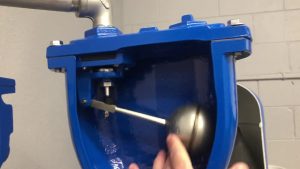Boru sistemlerindeki vanalar akışkan akışını kontrol eder ve yönlendirir. En yaygın kullanılan iki kontrol vanası türü tapalı vanalar ve küresel vanalardır. Amaçları benzer olsa da, nasıl çalıştıkları, tasarımları, uygulamaları ve daha fazlası konusunda bazı önemli farklılıklar vardır. Bu yazıda, tapalı vanalar ile küresel vanaları karşılaştıracağız. küresel vanalar Böylece ihtiyaçlarınıza bağlı olarak hangisinin daha iyi bir seçenek olduğunu belirleyebilirsiniz.
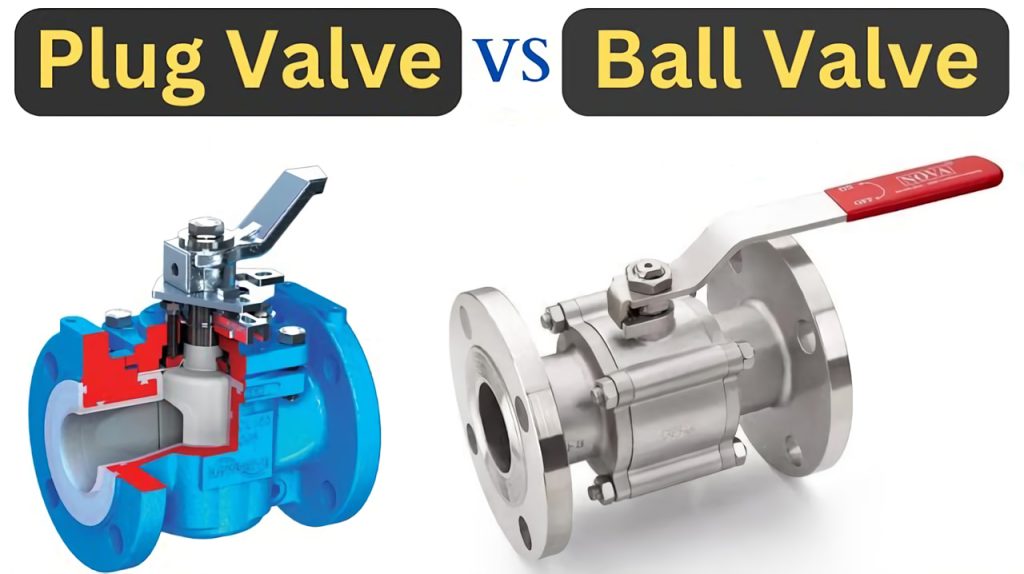
Plug Vanalar ve Küresel Vanalar Akışı Nasıl Düzenliyor?
Hem tapalı vanalar hem de küresel vanalar açmak veya kapatmak için 90 derecelik bir dönüşle çalışır. Bu da onları "çeyrek turlu vanalar" yapar. Ana amaçları hızlı açma/kapama akış kontrolü ve sızdırmazlıktır, akış hızlarını kısmak veya düzenlemek değildir.
Plug Vana Tasarımı ve Çalışması
Bir tapalı vana, akışı kontrol etmek için delikli bir geçiş yoluna sahip konik veya silindirik bir tapa kullanır. Açıkken, geçiş yolu valf gövdesindeki giriş ve çıkış portlarıyla hizalanarak sınırsız akışa izin verir. Kapatıldığında, tapa 90 derece döndürülür ve akışı durdurmak için portları tapanın katı kısmı ile bloke eder.
Plug valflerin yağlanmış veya yağlanmamış çeşitleri vardır:
- Yağlanmış: Tapanın hareketini yağlamak için bir yağ haznesine sahiptir. Bu, sürtünmeyi ve aşınmayı azaltır. Yüksek basınç ve sıcaklık uygulamalarında kullanılır.
- Yağlanmamış: Yağ yerine manşon kaplamasına güvenin. Tipik olarak yağlayıcı kontaminasyonunun söz konusu olduğu düşük basınçlı kullanımlar içindir.
Küresel Vana Tasarımı ve Çalışması
Küresel vanalar da akışı düzenlemek için delikli bir disk (bir bilye) kullanır, ancak çalışması biraz farklıdır. Küresel bilyenin ortasında bir delik vardır ve giriş ve çıkış portlarını hizalamak veya bloke etmek için valf gövdesi içinde 90 derece döner.
Küresel vanalar, delik boyutu, gövde tipi, bilye montajı ve port sayısı gibi faktörlere bağlı olarak çeşitli konfigürasyonlara sahiptir. Yaygın çeşitler şunları içerir:
- Tam iskele: Akış yolunun boru çapına uyması için büyük boyutlu bilye.
- Azaltılmış liman: Daha küçük bilye ve akış yolu.
- Yüzen top: Bilye giriş ve çıkış arasında yüzer.
- Muylu: Top bir pivot noktası üzerine sabitlenmiştir.
Plug Vanalar ve Küresel Vanalar Arasındaki Temel Farklar
Artık nasıl çalıştıklarının temellerini bildiğinize göre, performans, tasarım, maliyet, bakım ve uygulamalar söz konusu olduğunda plug vanalar ile küresel vanalar arasındaki bazı temel farklara bakalım.
Sızdırmazlık Yeteneği
Tapalı valfler genellikle küresel valflerden daha iyi sızdırmazlık sağlar. Tapanın daha geniş yüzey alanı daha sıkı bir sızdırmazlık sağlar, ancak çalışması için daha yüksek tork gerektirir. Küresel vanalar, malzemeler ve enjeksiyon contaları aracılığıyla bunu telafi eder.
Çalışma Kolaylığı
Küresel vanaların kullanımı daha kolaydır. Bilyeleri tapalı vanalara kıyasla daha hafiftir ve dönmek ve sızdırmazlık sağlamak için çok fazla torka ihtiyaç duymazlar. Bu da daha yumuşak açma ve kapama sağlar.
Dayanıklılık ve Uzun Ömürlülük
Küresel vanalar daha uzun ömürlü olma eğilimindedir. Plug vanalardaki yüksek tork aşınması ortalama ömrün kısalmasına neden olur. Küresel vanalar ayrıca koruyucu yataklar ve contalar sayesinde sıvılarla daha az temas eder.
Boyut ve Ölçeklenebilirlik
Küresel vanalar daha geniş bir boyut yelpazesine sahiptir ve büyük ölçekli küresel vanaların üretimi büyük tapalı vanalara göre daha kolaydır. Büyük tapalı vanalara nadiren rastlanırken, 24 inçten büyük küresel vanalar bulmak yaygındır.
Özelleştirme
Küresel vanalar, Sloven portları, çok portlu konfigürasyonlar ve özel astarlar veya bilye malzemeleri eklemek gibi daha fazla özelleştirmeye olanak tanır. Karmaşık özel plug valfler gerçekten bir seçenek değildir.
Maliyet
Plug vanalar genellikle küresel vanalardan daha ucuzdur. Basit tek parçalı gövdeleri, bazı küresel vana türlerine kıyasla üretim karmaşıklığını azaltır.
Küresel Vana Vs. Plug Vana Uygulamaları
Özelliklerine göre tapalı ve küresel vanaların en iyi nerede kullanıldığına bakalım:
Plug Vanalar Nerede Kullanılır
Aşındırıcı sıvılar - Kimyasal direnç için koruyucu manşon astarları takılabilir. Sıkı conta aynı zamanda sızıntı hasarını da önler.
Daha yüksek sızdırmazlık talepleri - Geniş sızdırmazlık yüzeyi, kabarcık geçirmez bir kapatma gerektiren uygulamalar için çok uygundur. Örneğin, doğal gaz boru hatları.
Aşındırıcı medya - Bulamaç gibi aşındırıcıların kontrolsüz akışını etkili bir şekilde kesebilir. Pürüzsüz konturlar birikmeyi önler.
Sık açma/kapama işlemi - Tekrarlanan çevrim, daha basit tek parçalı gövde ve bilye enjeksiyon mekanizmalarının olmaması sayesinde sızdırmazlığı küresel vanalar kadar hızlı etkilemez.
Maliyet bilincine sahip uygulamalar - Uygun fiyat noktası, aşırı basınçların / sıcaklıkların bir faktör olmadığı ticari uygulamalar için cazip hale getirir.
Küresel Vanalar Nerede Kullanılır
Daha yüksek ve daha düşük aşırı basınçlar - Yüksek ve düşük basınçlarda etkili sızdırmazlık için 4500 psi'ye kadar sınıf değerlerinde ve basınç destekli koltuk tasarımlarında mevcuttur. Kriyojenik sıcaklıkları veya aşırı ısıtılmış buhar hatlarını idare edebilir.
Sık sık daraltma - Küresel vana portlarının küresel şekli, kısma sırasında tapalı vanalara kıyasla hız değişikliklerinden daha az tel çekme hasarına neden olur.
Daha yüksek akış kapasitesi - Tam portlu küresel vanalar, daralmayı önlemek için boru çapıyla eşleşir. Bu sayede aynı boyuttaki tapalı vanalara göre daha yüksek akış hızlarını idare edebilirler.
Kolay bakım - Üç parçalı veya üstten girişli modeller gibi küresel vanalar, boru hattından sökülmeden servis yapılmasına olanak tanır. Yeniden inşa edilebilen yatakları bakımı kolaylaştırır. Tapalar tam vana değişimi gerektirir.
Otomasyon - Kompakt şekli, hafif çalışması ve çeşitli çalıştırma yöntemleri, küresel vanaları otomatik açma/kapama kontrolü için mükemmel hale getirir.
Küresel Vanalar ve Plug Vanalar Arasında Nasıl Seçim Yapılır?
İşte küresel vana ile tapalı vana arasında seçim yaparken kararınızı yönlendirmenize yardımcı olabilecek birkaç önemli nokta:
- Sızdırmazlık ve düzenleme - Kabarcık geçirmez kapatma kritik önem taşıyorsa, tapalı vanalar tercih edilmelidir. Kısma uygulamaları için küresel vanaları tercih edin.
- Çalışma sıklığı - Tapalı vanalar daha sık çevrimi idare eder. Daha basit açma/kapama görevleri için küresel vanaları kullanın.
- Çalışma koşulları - Yüksek sıcaklık ihtiyaçları için yağlamalı tapalı vanaları seçin. Aşırı düşük ve yüksek basınçlar için küresel vanalara yönelin.
- Akışkan özellikleri - Plug vanalar aşındırıcı, polimerize edici veya katı yüklü akışkanlara uygundur. Küresel vanalar temiz hizmetler için çalışır.
- Bakım faktörleri - Tapalı valfler hızlı conta değişimine olanak sağlar. Küresel vanalar hat içi süzgeç temizliğini kolaylaştırır.
- Bütçe - Plug vanalar maliyet etkinliği açısından kazanır. Uzun vadede tasarruf etmek için daha iyi üretilmiş küresel vanalara önceden daha fazla harcayın.
Uygulamanız için akışkan, basınç parametreleri, akış kontrol ihtiyaçları, uzun ömür beklentileri ve bütçenin dikkatlice değerlendirilmesi, en uygun tapa ve küresel vana seçimini sağlar. Ve bir uygulama mühendisine danışmaktan asla zarar gelmez!
Umarım bu tapalı vana ve küresel vana karşılaştırması, hangi vana türünün özel ihtiyaçlarınıza daha uygun olduğunu belirlemeniz için gereken ayrıntıları size vermiştir. Hem tapalı hem de küresel vanalar bir dizi endüstriyel kullanımda hayati rol oynar ve duruma bağlı olarak göreceli avantajları ve dezavantajları devreye girer. Başka vana sorularınız varsa, yorumlarda bana bildirin!


